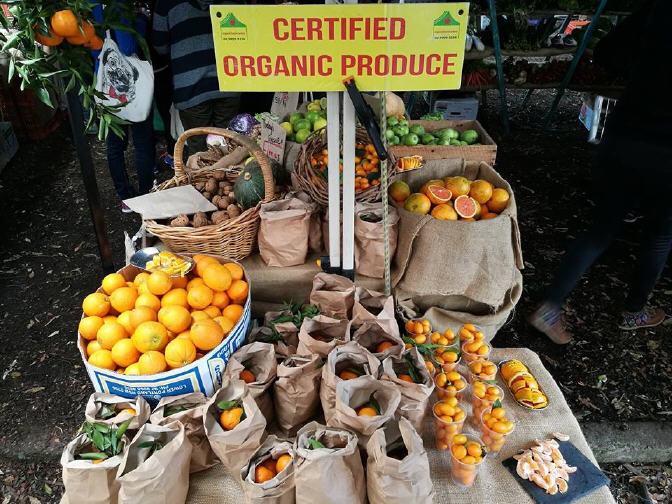“A sustainable human community is designed
in such a manner that its ways of life, technologies, and social institutions
honor, support, and cooperate with nature’s inherent ability to sustain life.”
–Fritjof Capra
How often have you seen people on your
social media news feed publicly denounce the careless regard humankind has for
its surroundings? While we are at that, how many of you have noticed the
emergent popularity of metal and biodegradable straws?
These recent turn of events did not just
happen overnight. It is a testament to the fact that more and more people are
becoming self-aware about the growing problem in environmental sustainability.
Indeed, sustainable living has certainly become somewhat of a buzz phrase. With
this in mind, more people are looking at the ways they can mitigate their
ecological footprint by driving less and using fewer plastic materials among
many more. However, if you are blissfully unaware, to you this might seem like
a fad. But, if you had paid any heed to the growing problem in sustainability—a
pressing environmental concern—you would notice that the ban on single-use
plastics is more than just a movement, but a lifestyle. It is no question that
if we wish to make this world habitable for the next generation, we should make
a conscious effort in reducing our carbon footprint. While some might argue
that this recent advocacy in sustainability is merely a gimmick—a passing
trend—this mounting environmental problem should be a cause for concern and as
a result, should be taken seriously. Sustainability is more than just the usage
of metal straws; it is a lifelong commitment to lead a lifestyle that mitigates
your impact on nature and the environment. It means favoring shops that
practice eco-culture and sustainability over those that do not. It means going
that extra mile to ensure that you are using as little of nature’s resources as
possible. It might be a major cause for inconvenience to some, but what little
you can do will eventually culminate in a significant contribution to a greener
and more sustainable earth. Remember, just as the saying goes, it might be only
one straw or piece of plastic to you but imagine the impact that would have on
the world if a million more people said the same thing?
However, going green goes beyond the
individualistic lifestyles we lead. Whether we live in Avida Settings Alviera or elsewhere, it is
imperative to involve our communities for a more concerted effort in sustainable
living---and you might just make a friend while you are at it. In any case,
here are some of the ways you can go green in the community:
Buy Local
More often than not, we tend to shop in the
bigger cities under the impression that big cities tend to have more products
than the ones we have in our local community. However, shopping in bigger
cities constrains you to use gas mileage, so opt for the alternative of
shopping locally. Apart from reducing food miles, it keeps local resources
circulating within the community. More importantly, it encourages you to get to
know your neighbors and socialize with them. Plus, it allows you to have a
conversation with the person who sourced your food which gives you a better
insight as to how it was grown.
Rethink the way you travel
Instead of reaching for the car keys
immediately when you are heading out, try to think if there are alternatives
where you can reduce your individual carbon footprint. Is the distance between
your destination and your point of origin realistically walkable? Can you
commute or carpool? Or better yet, do you have a bicycle which you can ride
going there? Learn to assimilate with your community and interact with the
locals by taking the local public transport. After all, it is so much easier
for people to strike up a conversation with you and vice versa when you are not
inside a car.
Reconnect with your neighbors
Sometimes, all it takes is a single
passionate individual to inspire a joint movement and see significant changes.
Unfortunately, we tend to be so disconnected from our communities and neighbors
that spreading the word about your environmental advocacy might be a little
daunting at first. In this regard, it is best to reconnect with the people you
live in proximity with. If you wish to have a greener community, you need to
take part in it, and at times, you might even need to inspire it. Talk to your
neighbors and get the general idea of what is going on around you and start
getting involved. After all, it might only take a single idea to effect change.
Spread the word
Although you cannot realistically expect
everyone to share your views and advocacy, people are increasingly curious
about living green. And much like anything that effectuates change, it starts
with education. More importantly, most of your neighbors might view your
lifestyle as unconventional and might want to do the same thing—especially if
they see you bike to work, buy local organic produce and do your own compost.
More often than not, it starts with a handful of interested and curious
individuals who would want to try it themselves. Show them and teach them how.
However, be careful so as not to be too preachy about your advocacy. After all,
nothing turns people off a particular movement more than a pushy individual who
is slamming their beliefs down their throats. Be careful in your approach,
encourage and inspire without judgment. People can either take it or leave it,
but do not try and convince them otherwise if they have already heard your
piece and decided it was not for them.




























